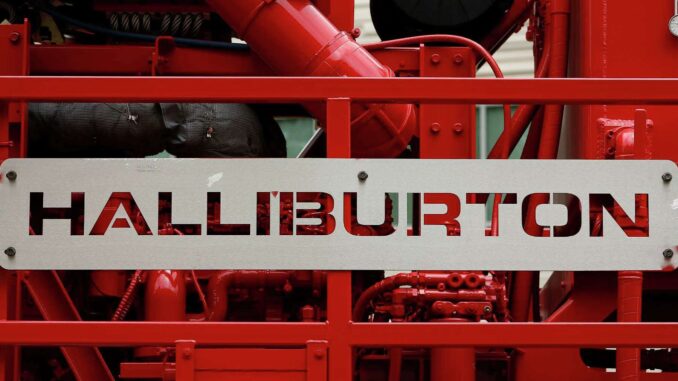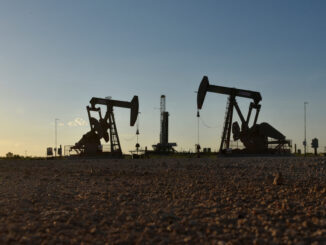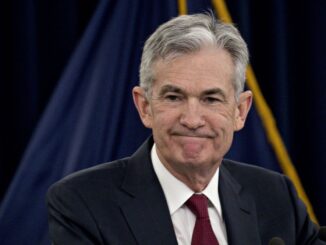
Amid uncertainty in the global economy as a potential recession, the ongoing Russia-Ukraine war and lingering coronavirus concerns in China put a question mark around near-term energy markets, the coming year looks solid for the upstream sector with calls on oil and gas and the materials and know-how needed to produce them, the top executive at giant oilfield services provider Halliburton said Oct. 25.
Years of under-investment have resulted in “fundamentally tight” oil and gas supplies, historically low inventory levels, production “well below expectations” and temporary actions such as the US’ largest-ever release from its Strategic Petroleum Reserve, company CEO Jeff Miller said in webcast remarks during his company’s third-quarter 2022 earnings conference call.
Miller’s glimpse into the near future in the oil and gas patch foresees activity increases around the world, “from the smallest to the largest countries and producers.”
He expects the areas of strongest growth will be the Middle East, led by Saudi Arabia, but with “meaningful increases in the United Arab Emirates, Qatar, Iraq and Kuwait.” Moreover, Brazil, Guyana and “many other” countries have signaled their commitment to stepped-up activity,” he added.
And in North America, “the market is strong and activity remains strong,” he said, adding he doesn’t foresee E&P company budget exhaustion in the US land activity as 2022 winds down in the next couple of months, as sometimes occurs around year-end.
A ‘sold out’ US land sector
Rather, Halliburton remains “sold out” for its equipment and services-wise in that market through the end of the year and into 2023, Miller said. And many drillers have said they have little or no premium rigs available this year.
Demand for equipment and services continues to grow, Miller said.
“I believe only multiple years of increased investment in existing and new sources of production will solve the short supply,” he said. “The effective answer to short supply is conventional and unconventional, deepwater and shallow water, new and existing developments, and short and long-cycle barrels. All of it.”
In late 2019 just before the coronavirus pandemic ravaged global economies, the US briefly was producing 13 million b/d of oil. But that volume fell substantially as domestic producers cut budgets and slashed activity for much of 2020 before cautiously restarting measured activity the following year.
But results were slow to come. US oil output fell below 10 million b/d in May 2020 before it began rising. It averaged 11.3 million b/d in 2020 and 11.2 million b/d in 2021, and while earlier in 2022 as much as 1 million b/d of growth was anticipated for the year, that expectation is now cut in half. The US Energy Information Administration recently projected US crude output at 11.7 million b/d in 2022 – a 4.5% year on year growth rate.
In the meantime, healthy demand, right supply and a cloudy outlook for a resolution to the Russia-Ukraine war that began last February caused crude prices to shoot up in early 2022. Consumers felt the punch of high fuel prices which caused US President Joe Biden last March to order the release of 180 million barrels of crude with a final tranche expected in December.
On average, US upstream producers’ capital budgets have risen by low double-digits in 2022, although most of that simply covered inflation. Activity levels are only up modestly this year compared to 2021 as producers face headwinds of diminishing acreage quality and field productivity. The result is a paradox of rising rig count – the US fleet added 175 rigs year-to-date in 2022 – but limited production growth.
Lower output growth in 2023
So as 2023 looks robust to E&P operators and oilfield equipment and services purveyors whose revenues and margins have shot up, it may be a year of limited production growth, long-time investment bank analyst Jim Wicklund, who now runs the consultancy Wicklund & Associates, said in a Oct. 22 subscriber note.
“The 2023 US oil production consensus is forming around [a] 3% to 4%” growth rate, Wicklund said.
That volume growth is also the 2022 production growth rate target of many large E&P companies. Producers prefer to remain disciplined in their spending and activity, aiming instead to reap large free cash flows and return a large chunk of them to shareholders.
As a result, Halliburton’s Miller expects progress towards increased supply “will be measured in years, not months, as behavior of both E&Ps and service companies have changed,” he noted in the Oct. 25 conference call.
“Operators [are taking] a measured approach to growth and investment,” he said. “[Oilfield] service companies follow the same discipline.”
Halliburton’s net income for Q3 2022 totaled $544 million or 60 cents/share, compared to net income in Q2 2022 of $109 million or 12 cents/share. Revenues totaled $5.4 billion in Q3 2022, up 6% sequentially and up 39% year on year.
Also sequentially, the company’s North American revenues grew almost 9% as both drilling and completions improved through Q3 from pricing and activity gains, Miller said.
International revenues grew 3% from Q2 from improved Middle East and Latin American activity which more than offset revenue declines as Halliburton exited its business in Russia, he added.



